The Simon Janashia Museum of Georgia is a great first stop in Georgia for an essential overview of the country’s place not only as a small country that has long lived at the crossroads of great empires but also as a modern nation with a layered millennia-old history unto itself.
The museum shows the highlights of Georgia from prehistoric to modern times, including but not limited to ancient and medieval jewelry, weapons, the Museum of Soviet Occupation (an exhibit housed within the museum), and the prehistory and flora and fauna of Georgia.
History and Premises of The Simon Janashia Museum of Georgia
The museum began in 1852 as the Caucasus Department of the Russian Imperial Geographic Society. The museum is set in a red brick building on Tbilisi’s main thoroughfare, Rustaveli Avenue. It was built in the late 19th century, originally as a military hospital. It was given to the museum in the early 20th century. The building is distinguished by its monumentality and the use of medieval Georgian architectural decor.
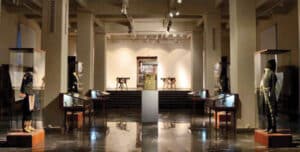
When Georgia declared its independence from Russia in 1918, the museum became the Museum of Georgia. When the Soviets invaded again in 1921, the Georgian government of the time sent much of the collection to Europe for safekeeping. By 1945, Georgian emigree historian Ekvtime Takaishivili was able to have much of the collection returned for the benefit of Georgians. The museum received was named after Simon Janashia in 1947, the same year that Georgian historian passed away. He had greatly advanced the study of the Caucasus peoples. He was also a founding member of the Georgian Academy of Sciences (GAS).
In the 1991-92 coup, the museum received significant damage from fighting, and part of the collection was destroyed by fire.
The museum was reorganized in 2004 under the joint management of the Georgian National Museum with other museums in Georgia. The Georgian National Museum is headquarted in the same building as The Simon Janashia Museum, one of the flagship museums of the national effort. Several other major museums fall under the National Museum such as the Open Air Museum of Ethnography, the Art Museum of Georgia, and several regional history museums.
The museum is partly funded by the state and was the subject of a major scandal in 2021/22 that saw some 100 scholars fired from various museums and especially from The Simon Janashia Museum. The firings seem to have been directed by the Ministry of Culture and, according to critics, were most likely related to the political views held by the scholars.
That said, the museum remains widely respected as one of the best introductions to Georgian history.
Visiting The Simon Janashia Museum of Georgia in 2023
The Simon Janashia Museum of Georgia isn’t high-tech, but it is not at all outdated. Some halls exhibit the character of the original building with wooden floors, elegant molding, and large windows that let in plenty of light. Other exhibits are given a darker mood with no windows, dark walls, and artificial light. Both settings provide different feelings for different exhibits, which are generally appropriate for the subject material. The exhibits that are moodier are the Museum of the Soviet Occupation, in which darker lighting projects a more somber mood, and the exhibit with pieces from the Georgian National Treasury, where the darkness provides a contrast that makes the artifacts stand out.
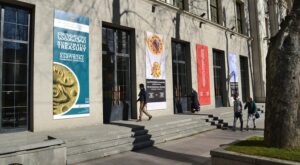
The first exhibit that you’ll likely see when you enter the museum is part of the collection from the Georgian National Treasury. The jewelry housed in this section is of particular interest. Not only is it many people’s favorite section of the museum for the artifacts’ unrivaled beauty, but the exhibit tells the story of ancient and medieval Georgian states through the methods and materials used to create the jewelry, tools, and coins.
This display tells the story of Georgia as both an important crossroads of great civilizations throughout history, but also a powerful and culturally rich civilization in its own right. The jewelry shows a mastery of metalwork through its intricacy that goes back millennia and even reflects pre-Christian imagery. The coin section is a collector’s dream with dozens of coins from Georgia and the ancient and medieval empires that Georgians crossed paths with such as Greeks, Persians, and Arabs.
The Museum of Soviet Occupation is also a significant point of interest. I think that in particular, the museum will be surprising to people who have a very surface-level knowledge of the timeline of the Soviet Union, and political systems in Eurasia. Very few people who aren’t immersed in Georgian history and the more specific parts of Soviet history would know about the independent Democratic Republic of Georgia, which existed from 1918 until 1921 and was founded on social democratic principles and was recognized by all major European powers at the time.
The museum effectively expressed the gravity of the purges of aristocracy and cultural figures during the first decades of Soviet rule in Georgia. For American students, it may be hard, but eye-opening to try to conceptualize the loss of culture that happened during that time, but the exhibit does a good job of scaling the significance of it for the past, present, and future of the Georgian nation.
The museum offers English-speaking guides that can tell of the exhibits in clear and understandable English. With an English-speaking guide, tickets are 45 Georgian lari. Without it, it’ll cost just 10 lari to explore independently. Most of the exhibits also have English-language placards that are well-translated and clear, but having a guide is excellent for learning more in-depth histories of artifacts, of which there are many. Like most museums in Georgia, the Museum of Georgia is closed on Mondays.
The Simon Janashia Museum of Georgia is an unmissable part of any Tbilisi itinerary. It does an excellent job of encapsulating some of the most significant aspects of Georgian identity into a moderately sized space.
You Might Also Like
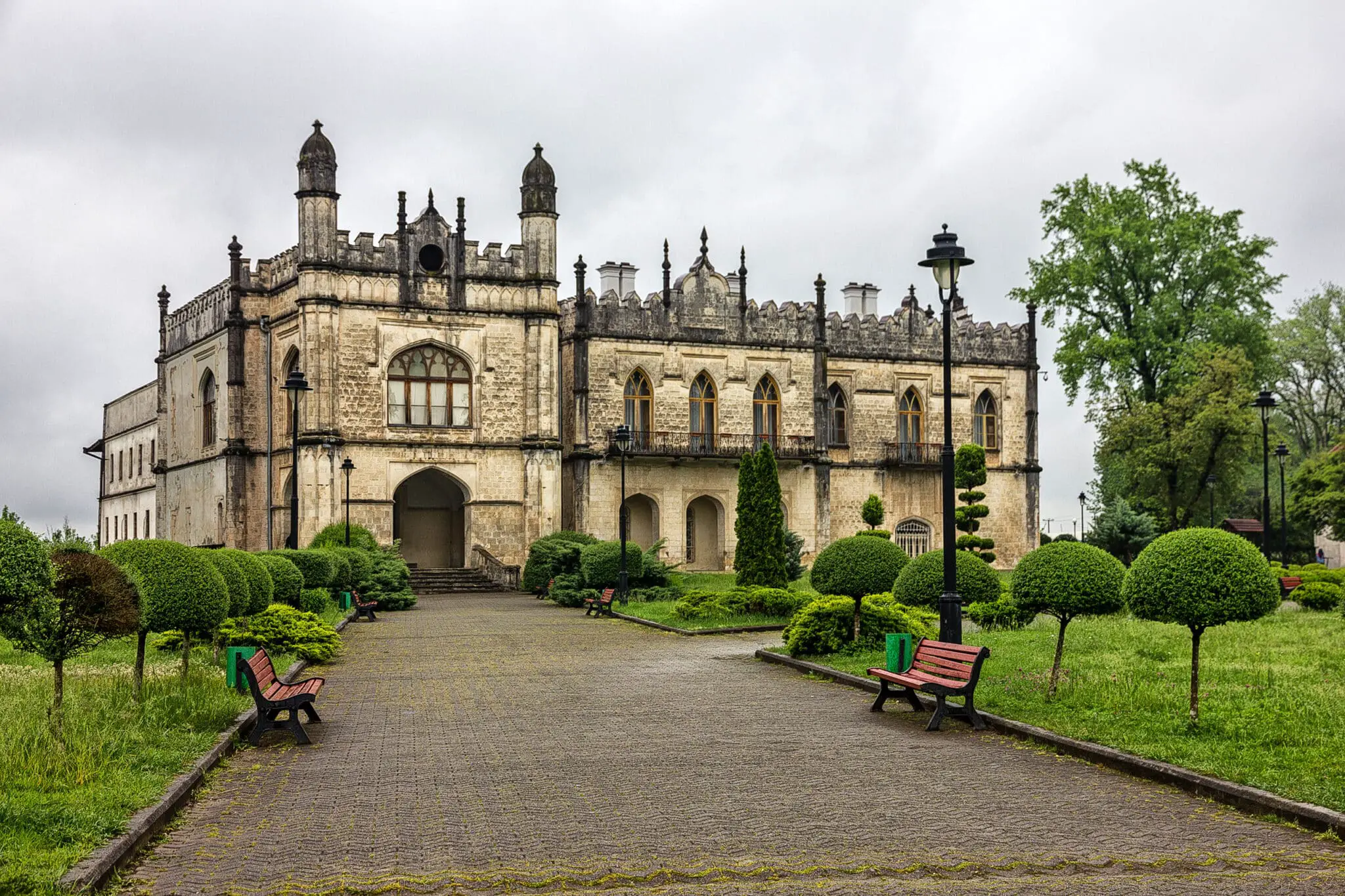
The Dadiani Palaces Historical and Architectural Museum
The Dadiani Palaces Historical and Architectural Museum is the preserved former home and museum of the House of Dadiani. The Dadianis once ruled the Georgian region of Mingrelia and their noble family traces its history back one thousand years. The Dadiani Palace is the de-facto center of Zugdidi, a relatively small city that is still […]
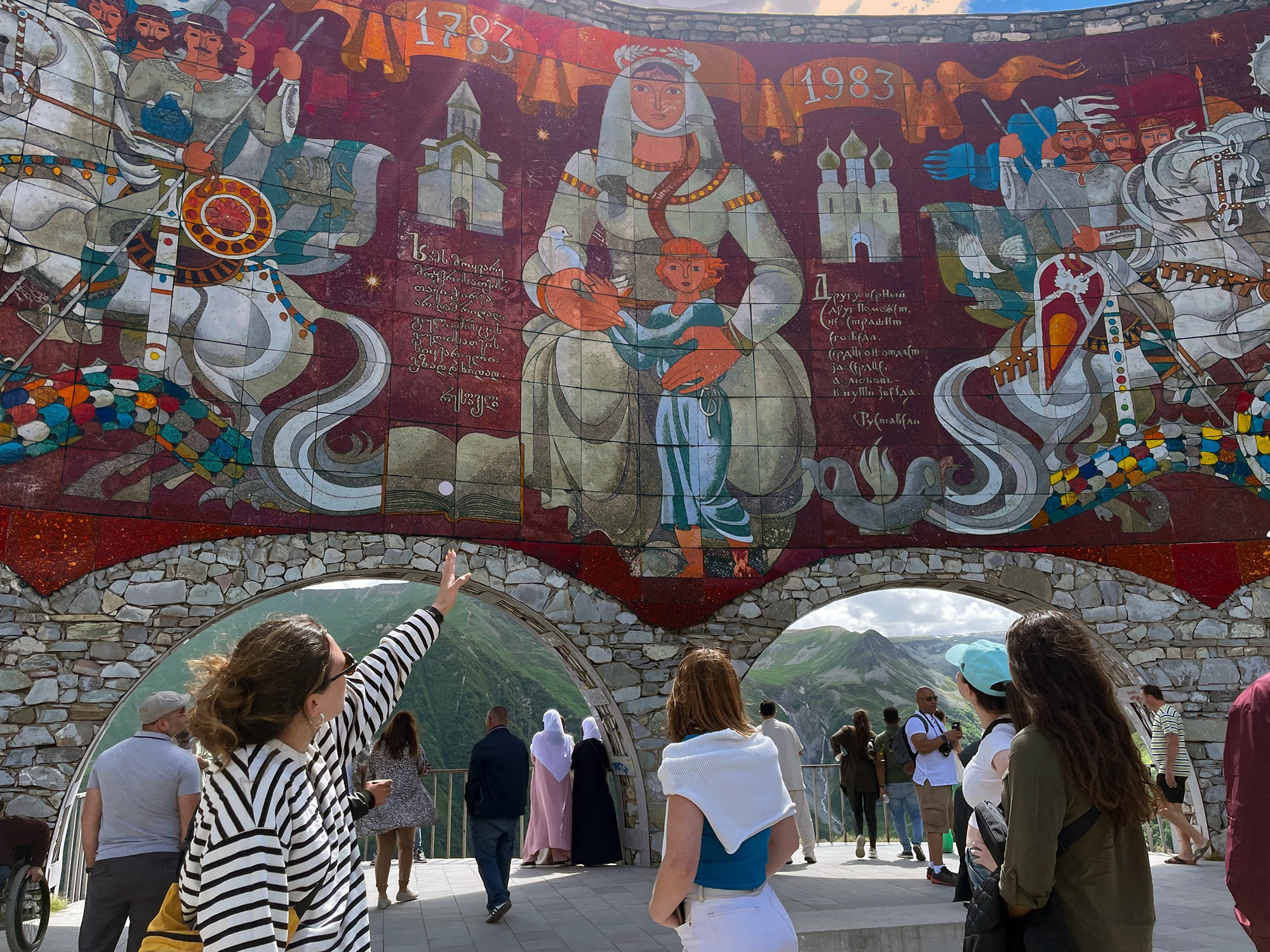
Soviet Mosaics in Georgia: Controversy, History, and Fascination
I can’t put my finger on what sparked my interest in Soviet-era mosaics, but at this point, I’m obsessed. As someone who grew up in the US, it’s a rather foreign thing to see the sides of entire buildings decked out in brightly colored scenes made of tiles. It also contradicts what many people believe […]
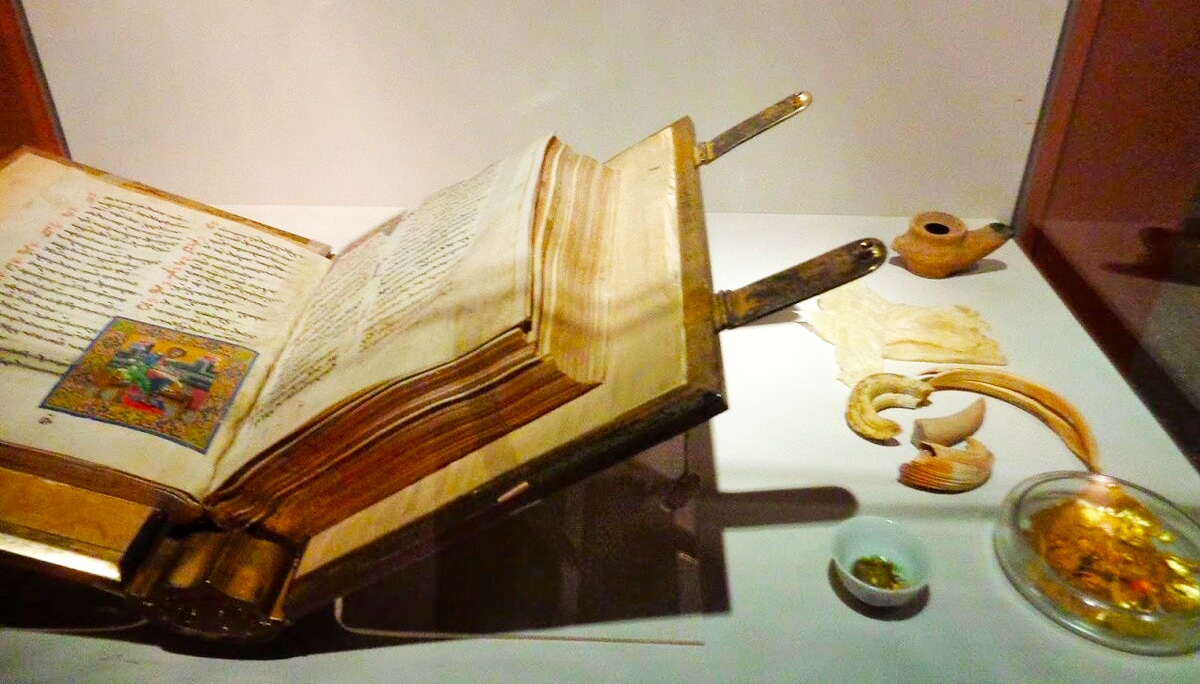
The Simon Janashia Museum of Georgia (The National Museum of Georgia)
The Simon Janashia Museum of Georgia is a great first stop in Georgia for an essential overview of the country’s place not only as a small country that has long lived at the crossroads of great empires but also as a modern nation with a layered millennia-old history unto itself. The museum shows the highlights […]
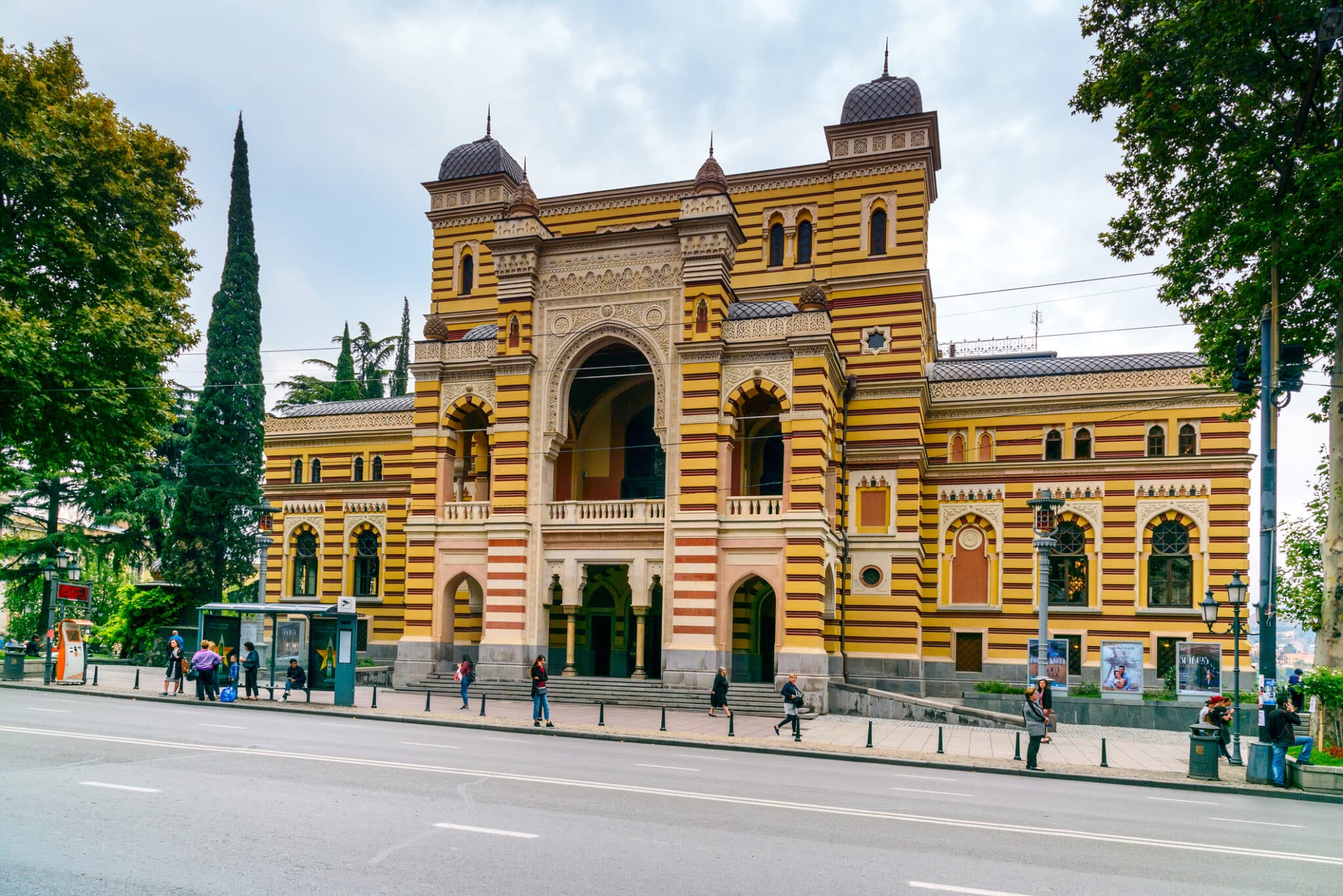
The Opera and Ballet Theater of Tbilisi
The Opera and Ballet Theater of Tbilisi has a rich history and offers a diverse range of opera and ballet performances – from traditional masterpieces to innovative contemporary offerings. Built in the late 19th century, the theater showcases a stunning blend of neoclassical and Moorish architectural styles as well as opulent interiors, creating a majestic […]
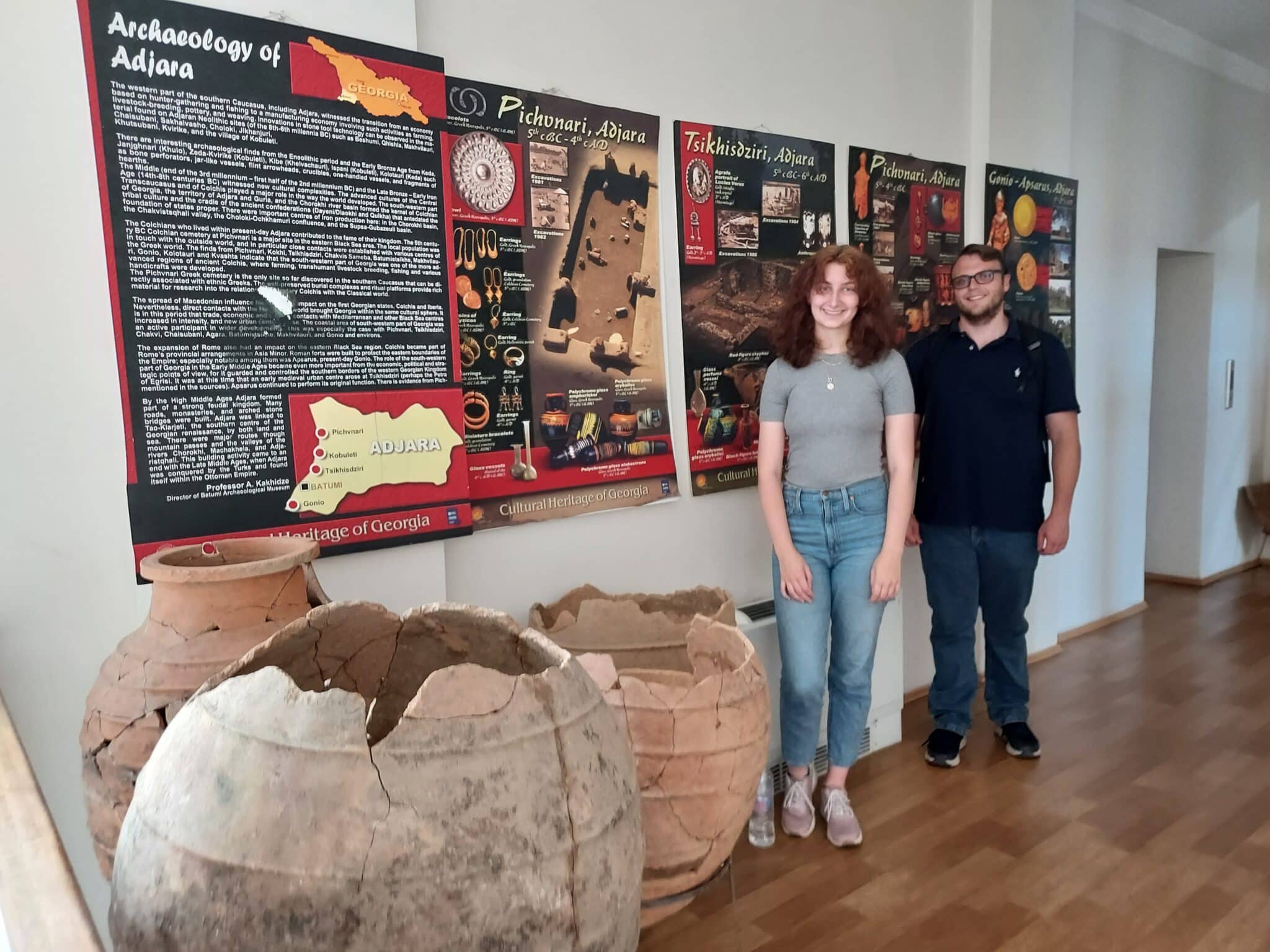
The Batumi Archeological Museum in Georgia
The Batumi Archeological Museum is centrally located on the main highway that runs through the city. It is a two-story stone building that houses a plethora of artifacts from Georgian excavation sites, bringing to life the story of the local people and their connections to European culture. History and Founding of the Batumi Archeological Museum […]